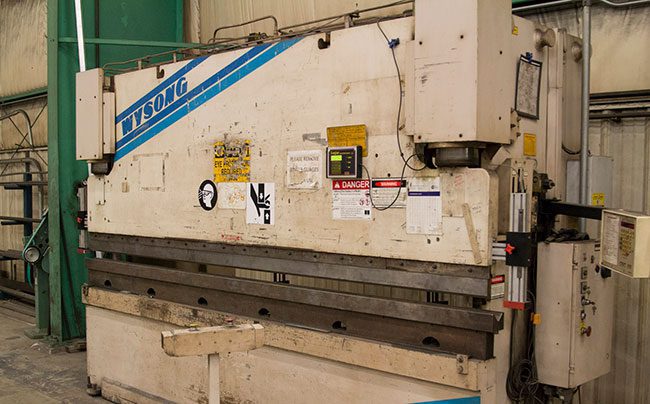The Transformation of the Press Brake

Advancements in technology are responsible for the growth and expansion of nearly every industry around, from the automotive industry to the travel industry and everything in between. Metal fabrication is no exception. Fabrication technologies over the last 50+ years have changed the way metal forming and welding has looked. One such tool that has changed dramatically over the decades is the Press Brake. The changes that have been made have allowed for greater productivity, decreased costs, and increased consumer satisfaction; three goals that every metal fabricator aims for.
Three Major Changes to the Modern Press Brake
- Drive Systems
- Automation
- Coordinated Flow
Drive Systems
Leading up through the 1960’s, the early press brakes were mechanical presses. Their drive systems featured a motor with clutch, flywheel, eccentric crank, and brake. These nifty machines could generate about 30 strokes per minute. These machines dominated the sheet metal industry’s mass production needs for a long time. Then, consumer needs changed and the industry needed to change along with it.
Just-in-time production became the new fad in metal fabrication next. Fabricators needed their press brake machines to be flexible in function and capable of creating more individualized product orders for consumers in shorter periods of time. This change in consumer production needs lead to the development of the early hydraulic press brake. This version featured variable controls for ram speeds, stroke lengths, applied force, and variable bend angle controls. Even though the hydraulic press brake produced at a significantly slower pace, this machine remained at the forefront up until recent years. Once again, manufacturing needs changed, this time adapting the hydraulic press to allow for mass customization. The result was the electric press drive.
With industry needs and expectations changing, the electric press drive has allowed for increased production speeds on individual fabrication orders. The new electric press drives, and similar hybrid hydraulic-electric drives, have the capability of offering rapid approach speeds of 700 inches per minute (IPM) as well as bending speeds as low as 5 IPM. The diverse capabilities of these machines allows for optimum efficiency and function, and for greater precision with every bend.
Automation
The Industrial Revolution didn’t end in the mid-1800’s. It has continued on for more than 150 years, and has changed the way that manufacturing and production have looked along the way. Before, press brake operators spent a significant amount of time on programming, test bending, inspecting, and adjusting the products and machine. Now, much of the prep-work and testing can be done offline. Today’s machines have the capability to perform accurate measurements and adjust for angular errors, allowing for greater precision bending and an increase in customized, small-volume jobs. Digital databases allow for part program storage; computer programs allow for greater ease of design and setup; tooling is performed with greater speed thanks to the inclusion of automatic press brake tool changers. Because of automation, the fabrication process has only become faster and more precise.
Coordinated Flow
Portable press brakes have allowed for greater speed and ease throughout the fabrication process. Not every part undergoes the same processing in the same order. The press brakes are smaller in size and require less dedicated space in the shop. Their size allows for ease of transport and flexibility in function. No matter what the fabrication project is, the adaptation of the press brake has allowed for today’s jobs to be completed with decreased production time and greater ease.
At Swanton Welding, we pride ourselves in our ability to produce high quality, expertly fabricated sheet metal products for industrial and commercial customer all across the nation. To learn more about our capabilities, the machines we use, or how we could be the right fit for your next project, simply give us a call or fill out the online form for more information.

